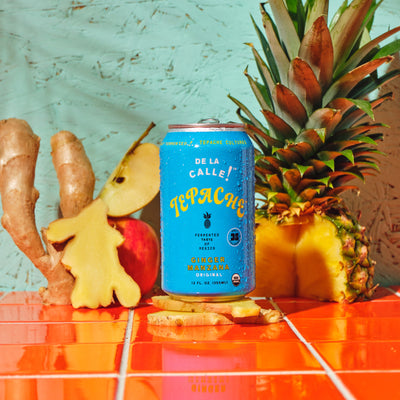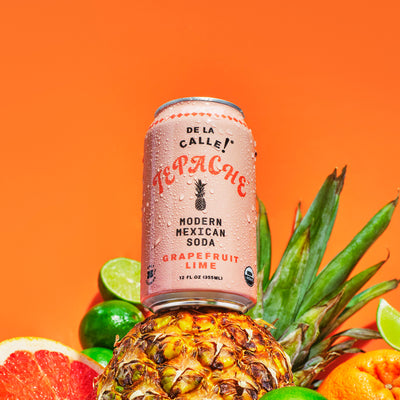Understanding the Mexican Culture and Traditions

Do you love Mexican cuisine and want to learn more about the culture? If so, check out this article to understand Mexican culture and some of the most famous traditions in Mexico!
Mexican History
Before Mexico was conquered by the Spanish, it was home to several great civilizations such as the Olmec, Maya, Zapotec, and Aztec peoples. These civilizations flourished at different times for over 3000 years before the Europeans colonized the land that we now call Mexico. The Olmec civilization lasted from 1400 to 400 BCE and was preceded by the Mayans.
The Mayans are known, amongst other things, for their incredible architectural achievements. Between 100 BC and 250 AD, they built the city of Teotihuacan, which was home to around 150,000 people. After the Mayans, the Aztecs came to power. They were the last empire in Mexico before the arrival of the Spanish, ruling from 1325 to 1519.
In 1519, Hernan Cortes arrived in the Aztec Empire and conquered the native people. He turned the Aztec Empire into a Spanish colony. Spain ruled in Mexico for the next 300 years until Mexicans fought and won their liberation in 1810. Since then, there have been several waves of immigration to Mexico from countries around the world, such as France, China, and Lebanon.
Regions of Mexico
Although Mexico is broken up into states, these states are often informally grouped into four regions: El Norte, Central North Mexico, Central Mexico, and The South.
El Norte
The nine states that make up el norte are: Baja California, Baja California Sur, Chihuahua, Coahuila, Durango, Nuevo León, Sinaloa, Sonora, and Tamaulipas. Given that six of these states border the United States, there’s a strong mixture of American and Mexican culture in the region.
In fact, early in the 19th century, Mexico owned all of Texas and several states in the American midwest, so there are strong historical ties between el Norte and the United States. This region is known for its Tex Mex cuisine, a cuisine that’s a combination of both cultures and beloved by people everywhere.
Central North Mexico
The states in the Central Northern Region include: Aguascalientes, Colima, Guanajuato, Jalisco, Michoacán, Nayarit, Querétaro, San Luis Potosí, and Zacatecas. In this region, Mexico’s colonial history has a strong presence. There were large waves of European immigrants to Central Northern Mexico, so it is the most European feeling region. That being said, it is also home to several indigenous groups, so it is an extremely diverse region.
Central Mexico
Although there are six states in Central Mexico (Hidalgo, Mexico State, Mexico City, Morelos, Puebla, Tlaxcala, and Veracruz), it is dominated by Mexico City, the capital of Mexico. Central Mexico was the home of the Aztec Empire. The part of this state that touches the Gulf of Mexico is heavily influenced by Cuban culture.
The South
Southern Mexico is home to the following states: Campeche, Chiapas, Guerrero, Oaxaca, Quintana Roo, Tabasco, Veracruz, and the Yucatán. There is the largest indigenous population in the south and, consequently, the greatest linguistic diversity. Oaxaca is known for its distinct, delicious cuisine.
The Languages of Mexico
The primary language spoken in Mexico is Spanish, and over 90% of the population speaks it. However, aside from Spanish, there are 68 indigenous languages recognized by the state of Mexico. It is estimated that over 130 indigenous languages have been lost, so the government created the Law of Linguistic Rights in 2002 to promote and protect indigenous languages. Of these languages, Nahuatl, Maya, and Mixtec are the most commonly spoken.
The Religions of Mexico
Religion is a large part of Mexican culture, specifically Catholicism. Due to the focus on religion in Mexican culture, family and religious traditions are also very important. Although a large majority of the Mexican population describe themselves as Catholic, there are strong elements of indigenous religions woven into their practice of Catholicism.
In Mexico, the Easter holiday lasts for two weeks and is known as Semana Santa. These two weeks are full of celebrations, special foods, and family time. A large majority of schools and businesses close during these two weeks, and many Mexican families go to the beach to enjoy their time off.
Important Values in Mexican Culture
Family is one of the most important pillars of Mexican society. Mexican families tend to be large and include extended family. Oftentimes, close friends are also considered family and will be invited to important celebrations.
It’s common to throw large family parties at home, and making guests feel welcome is incredibly important. It is also common for several generations to live in one household, especially seeing as there is an emphasis on respecting and learning from elders in Mexican culture.
Mexican Music
One of the most popular types of Mexican music is Mariachi-style folk music. If you’ve ever heard the song “La Cucaracha” (The Cockroach), then you’ve heard mariachi music. Mariachi music originated in Jalisco in the 19th century. A Mariachi band is normally made up of a group of musicians, usually men, wearing charro suits and large, wide-brimmed hats. The instruments in a traditional Mariachi band include violins, guitars, basses, vihuelas, and trumpets, accompanied by singing.
Mexican Dance
The national dance of Mexico is called Jarabe Tapatio, or Mexican Hat Dance. In the 18th and 19th centuries, the Mexican Hat Dance was performed during courtship ceremonies, but nowadays, it is usually performed by dance groups. Both women and men wear colorful, ornate clothing and dance to the music of Mariachi bands or string bands.
Mexican Cuisine
Mexican cuisine varies greatly depending on the region. However, tortillas and other corn-based foods are found all over the country. Peppers, tomatoes, and beans are other staples of Mexican cuisine, regardless of region. Street food is also a large part of Mexican cuisine in all major cities.
In terms of beverages, drinks like tequila and tepache are also widely popular. Tepache is a traditional Mexican drink made from fermented pineapple rinds and flavored with fruits and spices.
Holidays and Celebrations
As with most cultural groups, celebrations make up a huge part of Mexican culture. Read on to learn about specific events.
Quinceañera
A quinceañera is a celebration held in honor of a girl’s 15th birthday. The quinceañera is supposed to mark the girl’s journey from childhood into womanhood and is a celebration that often includes family and friends. At the quinceañera party, the birthday girl wears a special gown, and there is lots of dancing to mark her entrance into womanhood.
Cinco de Mayo
Cinco de Mayo is often confused with Mexican Independence Day. Although people often equate it to the Fourth of July in the US, Cinco de Mayo actually marks the Mexican army’s defeat of the French army at the Battle of Puebla. Nowadays, Cinco de Mayo is primarily a celebration of Mexican culture within the United States for Mexican-Americans.
Día de Los Muertos
Día de Muertos (“Day of the Dead”) is celebrated annually from November 1st through November 2nd. Día de Muertos is an opportunity for living friends and family to pray for their loved ones who have passed away. Although it is a day to remember the dead, Día de Muertos is a celebration, not a time of mourning. It is customary to create an ofrenda, or altar, to offer gifts to the people you love who have passed away.
Conclusion
Mexico has a rich, vibrant culture that is influenced by the customs of indigenous people, European conquistadores, and all of the immigrants who have made Mexico their home. As a Catholic society, several of the important celebrations in Mexico are centered around Christian holidays but often are infused with the practices of pre-Columbian religions.
Sources:
Languages of Mexico - Mexican Indigenous Languages | Don Quijote
The Mexican Hat Dance | StMU History Media
Five facts about Día de los Muertos (The Day of the Dead) | Smithsonian













